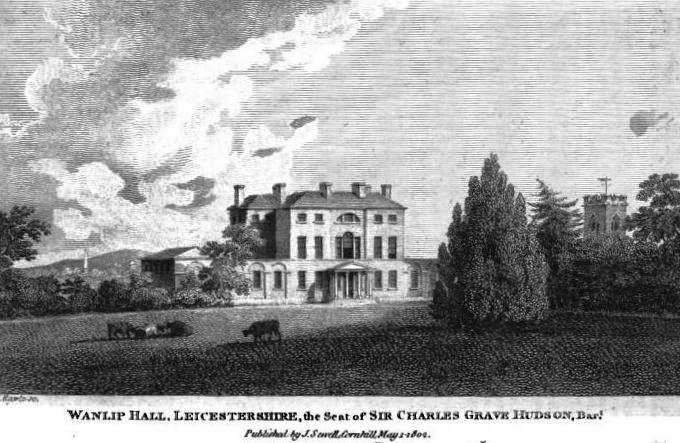 | ||
There have been seven baronetcies created for persons with the surname Palmer, two in the Baronetage of England, one each in the Baronetages of Ireland and of Great Britain and three in the Baronetage of the United Kingdom. Four of the creations are extant as of 2015, one of which became merged into the first grantee's later barony: Baron Palmer, the first baron being an heir to part of the Huntley & Palmers international biscuit business (as with the short-lived, single-holder 1904 creation) and a patron of music. The other current creations were awarded to a lawyer and politician of wealth under Charles II, to a South Sea Company director under George III and to a shipbuilder, shipbroker who was a Liberal statesman under Victoria.
Contents
- Palmer baronets of Wingham 1621
- Palmer baronets of Carlton 1660
- Palmer baronets of Castle Lackin 1777
- Hudson later Palmer baronets of Wanlip Hall 1791
- Palmer baronets of Grinkle Park and of Newcastle upon Tyne 1886
- Palmer baronets of Reading 1904
- Palmer baronets of Grosvenor Crescent 1916
- References
The Palmer Baronetcy, of Wingham in the County of Kent, was created in the Baronetage of England on 29 June 1621 for Thomas Palmer. The third Baronet was High Sheriff of Kent in 1691. The fourth Baronet sat as Member of Parliament for Kent and Rochester. The title became extinct on the death of the sixth Baronet in 1838.
The Palmer Baronetcy, of Carlton in the County of Northampton, was created in the Baronetage of England on 7 June 1660 for the lawyer and politician Geoffrey Palmer. The second Baronet was Member of Parliament for Higham Ferrers. The third, fourth and fifth Baronets all represented Leicestershire in the House of Commons. The fifth Baronet served as High Sheriff of Leicestershire in 1782 and the eighth Baronet as High Sheriff of Northamptonshire in 1871. The family seat for 500 years was East Carlton Hall, Northamptonshire until 1933 since when it has been Carlton Curlieu Hall, Leicestershire. The title vests in its twelfth holder.
The Palmer Baronetcy, of Castle Lackin in the County of Mayo, was created in the Baronetage of Ireland on 29 May 1777 for Roger Palmer. The fifth Baronet sat as Member of Parliament for County Mayo. The title became extinct on his death in 1910.
The Hudson, later Palmer Baronetcy, of Wanlip Hall in the County of Leicester, was created in the Baronetage of Great Britain on 28 July 1791 for Charles Grave Hudson, a Director of the South Sea Company and High Sheriff of Leicestershire in 1784. In 1813 the second Baronet assumed by Royal sign-manual the surname of Palmer in lieu of his patronymic on succeeding to the estates of his maternal grandfather, Henry Palmer, of Wanlip. The title vests in its eighth holder.
The Palmer Baronetcy, of Grinkle Park in the County of York and of Newcastle upon Tyne, was created in the Baronetage of the United Kingdom on 31 July 1886 for Charles Palmer, a coal and shipping magnate and Liberal politician. The third Baronet, residing at Walworth Castle was High Sheriff of Durham in 1915. The title vests in its fifth holder.
The Palmer Baronetcy, of Reading in the County of Berkshire, was created in the Baronetage of the United Kingdom on 25 August 1904 for Walter Palmer, Member of Parliament for Salisbury and the son of George Palmer, the founder of Huntley & Palmers, biscuit manufacturers. The title became extinct on his death in 1910.
The Palmer Baronetcy, of Grosvenor Crescent in the City of Westminster, was created in the Baronetage of the United Kingdom on 26 January 1916. The title vests in its fourth holder who is the fourth Baron Palmer.
Palmer baronets, of Wingham (1621)
Palmer baronets, of Carlton (1660)
The heir apparent is the eldest son of the above, Geoffrey Palmer (born 1966).
Palmer baronets of Castle Lackin (1777)
Hudson, later Palmer baronets, of Wanlip Hall (1791)
The heir apparent is Robert John Hudson Palmer (born 1960), eldest son of the above.
Palmer baronets, of Grinkle Park and of Newcastle-upon-Tyne (1886)
The heir apparent is Arthur Morris Palmer (born 1981), son of the above.
